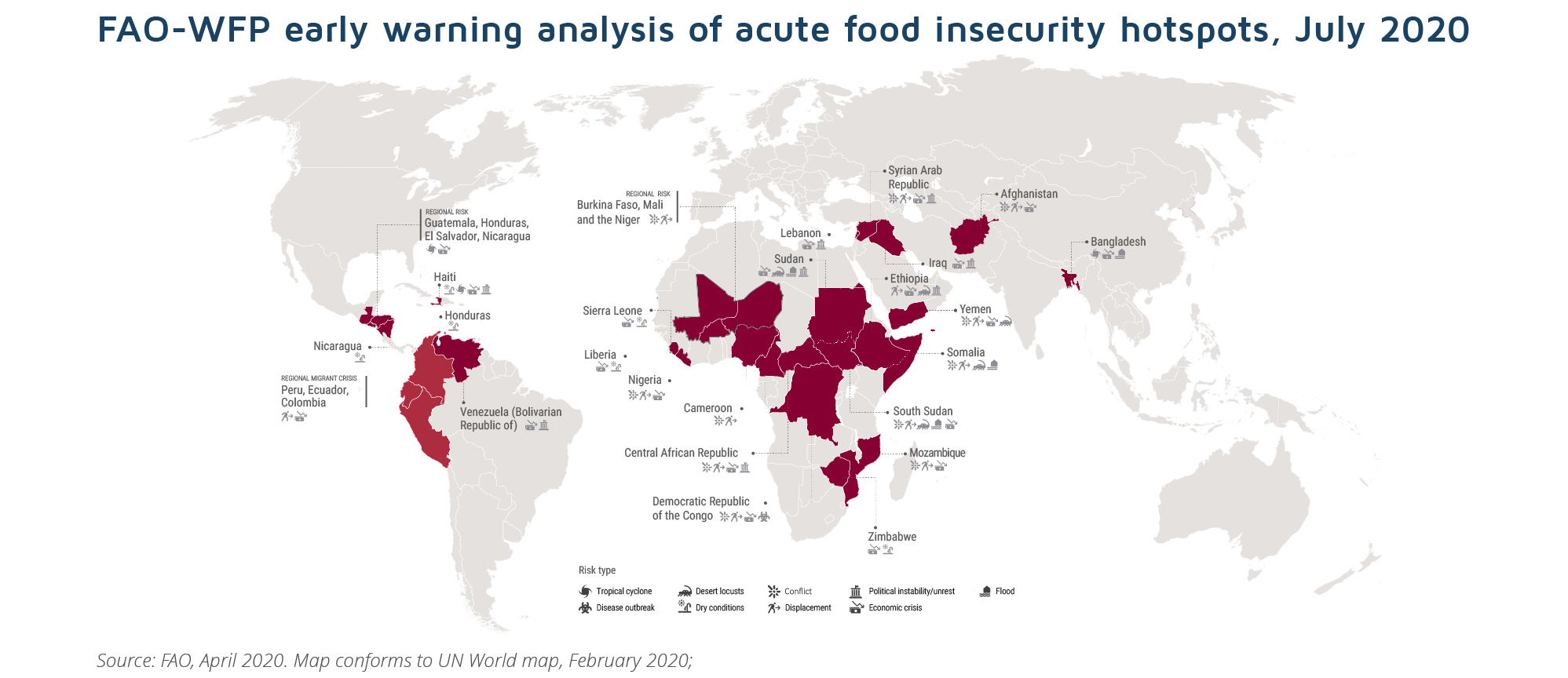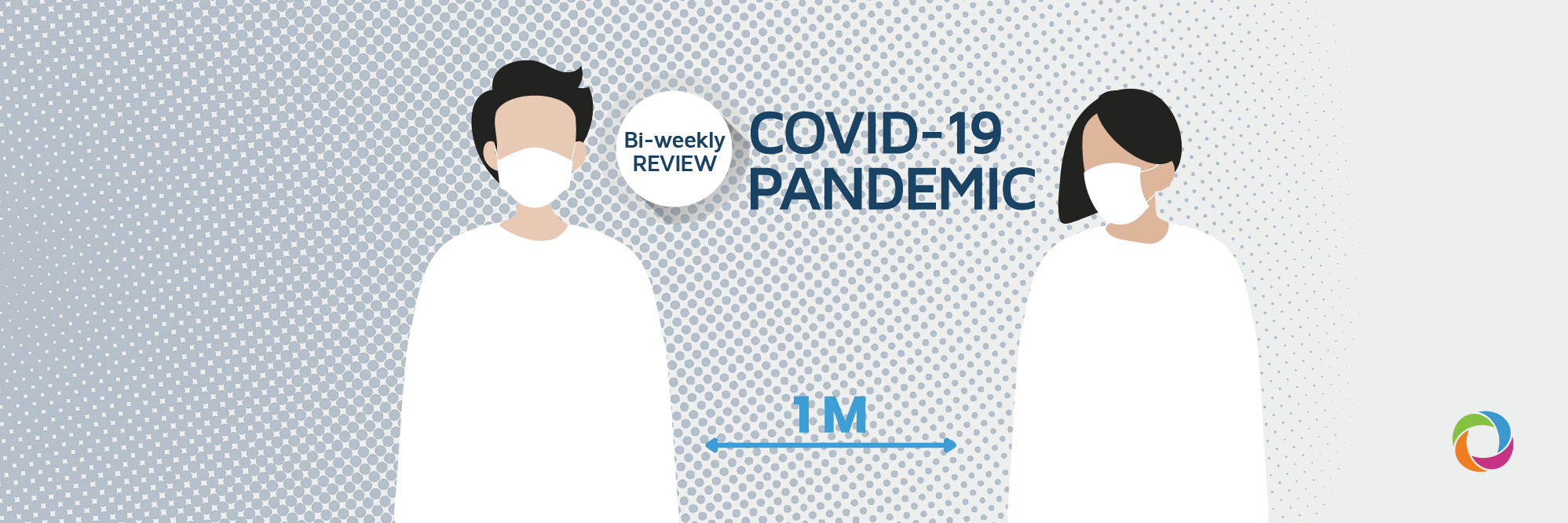(July 9 – 22, 2020)
As the number of the COVID-19 infections worldwide today reached the 15 million mark, a team of scientists at Oxford University’s Jenner Institute and the Oxford Vaccine Group have met with promising results in trials of a vaccine against the coronavirus. At the same time, 75 countries that are able to finance vaccines from their own public finance budgets have partnered with up to 90 lower-income countries through a mechanism designed to guarantee rapid, fair and equitable access to COVID-19 vaccines worldwide.
The lower-income countries could be supported through voluntary donations to Gavi’s COVAX Advance Market Commitment (AMC) by wealthier nations. Together, this group of up to 165 countries represents more than 60% of the world’s population and there are currently over half of all the G20 economies in the group.
Dr. Seth Berkley, CEO of Gavi, the Vaccine Alliance, believes that the mechanism will allow member countries to receive a guaranteed share of vaccine doses and so avoid being pushed to the back of the queue, as happened during the H1N1 pandemic a decade ago.
This news seems optimistic but it is as yet unclear how the mechanism will co-exist with the possible individual actions that governments will take. There have been numerous situations of fairly aggressive procurement politics being endorsed by the world’s leading economies during the corona outbreak.
The most recent situation that sparked concern was that of Remdesevir stocks (one of the two medicines currently used to treat coronavirus patients). At the beginning of July, the US government secured a deal to procure almost 100% of the stock of the medicine manufactured by its California-based producer, leaving almost nothing for the remaining developed countries with the manufacturer announcing that the cheaper generic-version of Remdesevir would be available to lower-income states but not to the wealthy nations who were supposed to buy it directly from the producer.
If the COVAX commitment goes well, by the end of 2021 two billion doses of COVID-19 vaccines (that have undergone regulatory approval and/or WHO prequalification) will be delivered to all participating countries, proportional to their populations. Healthcare workers will have priority in vaccination programs, after which it is assumed the vaccination rate will expand to cover 20% of the population of participating countries.
Education and corona
Nearly 720 million students are still out of school in developing countries. The combined impact of school closures and the economic crisis provoked by the coronavirus may turn back decades of strenuous efforts to achieve progress in the education sector. Girls are especially at risk, according to the Global Partnership for Education. During lockdowns, girls are more likely to be engaged in household chores whilst also trying to undertake remote learning. At the same time, while out of school, girls are also more vulnerable to gender-based violence, early marriage and teenage pregnancy.
To tackle these challenges, GPE has approved grants totaling US$381 million to help 47 countries respond to coronavirus-related school closures and ensure that children continue to learn during the pandemic.
The funding allows countries to use several platforms simultaneously to reach the greatest number of students: radio and television programming, delivery of educational content online via YouTube and e-learning. Some governments are delivering dynamic school lessons via print and online editions. Another regional grant from GPE has been used to give every child across the four Eastern Caribbean States of Dominica, Grenada, St Lucia, and St Vincent and the Grenadines access to an online learning device.
In an effort to protect education for refugee children, the UK will help at least 300,000 vulnerable refugee children to continue their education by allocating £5.3 million of UK aid. The funding will allow UNHCR to make direct payments to 5,669 teachers in 10 refugee-hosting countries for seven months where urgent support is needed. These countries are Kenya, Malawi, Mauritania, Pakistan, Rwanda, South Sudan, Sudan, Uganda, Yemen, and Chad.
“In refugee camps in eastern Chad, teachers have come up with innovative ways to continue lessons. They are giving students work which is left outside their homes each week. Once completed, the work is then collected by parents’ groups and, after a 48-hour period to prevent the risk of infection spreading, given to teachers to mark. The work is then returned to children.”
The United Nations Educational, Scientific, and Cultural Organization (UNESCO) estimates that global aid for education is likely to decline by up to US$2 billion from 2018 to 2022 as a result of the recession caused by COVID-19 entailing a 12% decrease in international support for education.
Hunger on the rise
According to the Food and Agriculture Organization of the United Nations (FAO), 690 million people went hungry in 2019 – up by 10 million from 2018 and by nearly 60 million in the last five years. According to the recently published report “State of Food Security and Nutrition in the World”, the COVID-19 pandemic “is intensifying the vulnerabilities and inadequacies of global food systems – understood as all the activities and processes affecting the production, distribution and consumption of food”.
“While it is too soon to assess the full impact of the lockdowns and other containment measures, the report estimates that, at a minimum, another 83 million people, and possibly as many as 132 million, may go hungry in 2020 as a result of the economic recession triggered by COVID-19 (the range corresponds to the most recent prognosis of a 4.9 to 10 % drop in global GDP)”
FAO has identified 27 countries that are on the frontline of facing COVID-19-driven food crises.

“Latin America is facing an unprecedented hunger crisis as a result of the pandemic,” said Benedetta Lettera, Desk Manager for Action Against Hunger in Latin America. “It is a perfect storm, with a major health crisis accompanied by a socio-economic crisis and a grassroots situation that was complex even before the pandemic“.
Thousands of families are reported to “go days without food, travel miles looking for food and have returned to self-managing ‘community pots’ [of food] between neighborhoods which had not been organized since the 1990s when the country was suffering a serious economic crisis”.
Deal!
On July 21, European Union leaders agreed on a “groundbreaking plan” to jointly borrow €750 billion to respond to the coronavirus pandemic. This recovery fund will be comprised of €390 billion in grants and €360 billion in loans and will be part of a new €1.074 trillion seven-year budget, the Multiannual Financial Framework (MFF) which has also now been unanimously agreed upon, bringing the total financial package to €1.82 trillion.
According to Politico.eu, the MFF was particularly difficult to put together on this occasion because of Brexit. “National capitals and the EU institutions had to plug a hole of some €10 billion a year or more that was left by the departure from the bloc of the U.K. which had been a big-budget contributor”.
The negotiations lasted four days and, at a certain point, the deal was on the verge of collapse because of “fierce disagreements, particularly over the grant portion of the recovery fund” expressed by Austria, Denmark, the Netherlands, and Sweden.
The DevelopmentAid news team is working hard to keep you up to date with the most important headlines and events during the COVID-19 pandemic. Become a member and subscribe to our newsletter in order to remain fully informed about the latest news in the International Development Sector.
About COVID-2019 Coronaviruses are a large family of viruses that are common in many different species of animals including camels, cattle, cats and bats. Rarely, animal coronaviruses can infect people and then spread between them such as was the case with MERS (2012) and SARS (2003).The symptoms of the virus are very similar to those of a common cold – runny nose, headache, cough, sore throat, fever, a general feeling of being unwell. Blood tests are necessary in order to prove the presence of the virus in the organism. Named by scientists as the “Wuhan seafood market pneumonia virus”, COVID-19 is a coronavirus, like MERS and SARs, all of which have their origins in bats. Initial reports show that, in the early stages of the outbreak (early January 2020), many of those infected in Wuhan had some link to a large seafood and live animal market – the Huanan Seafood Wholesale Market, mainly its western wing where wildlife animals are traded. This suggests that the virus initially affected an animal and subsequently spread to a person in a what a CDC has called “the species barrier jump”.


